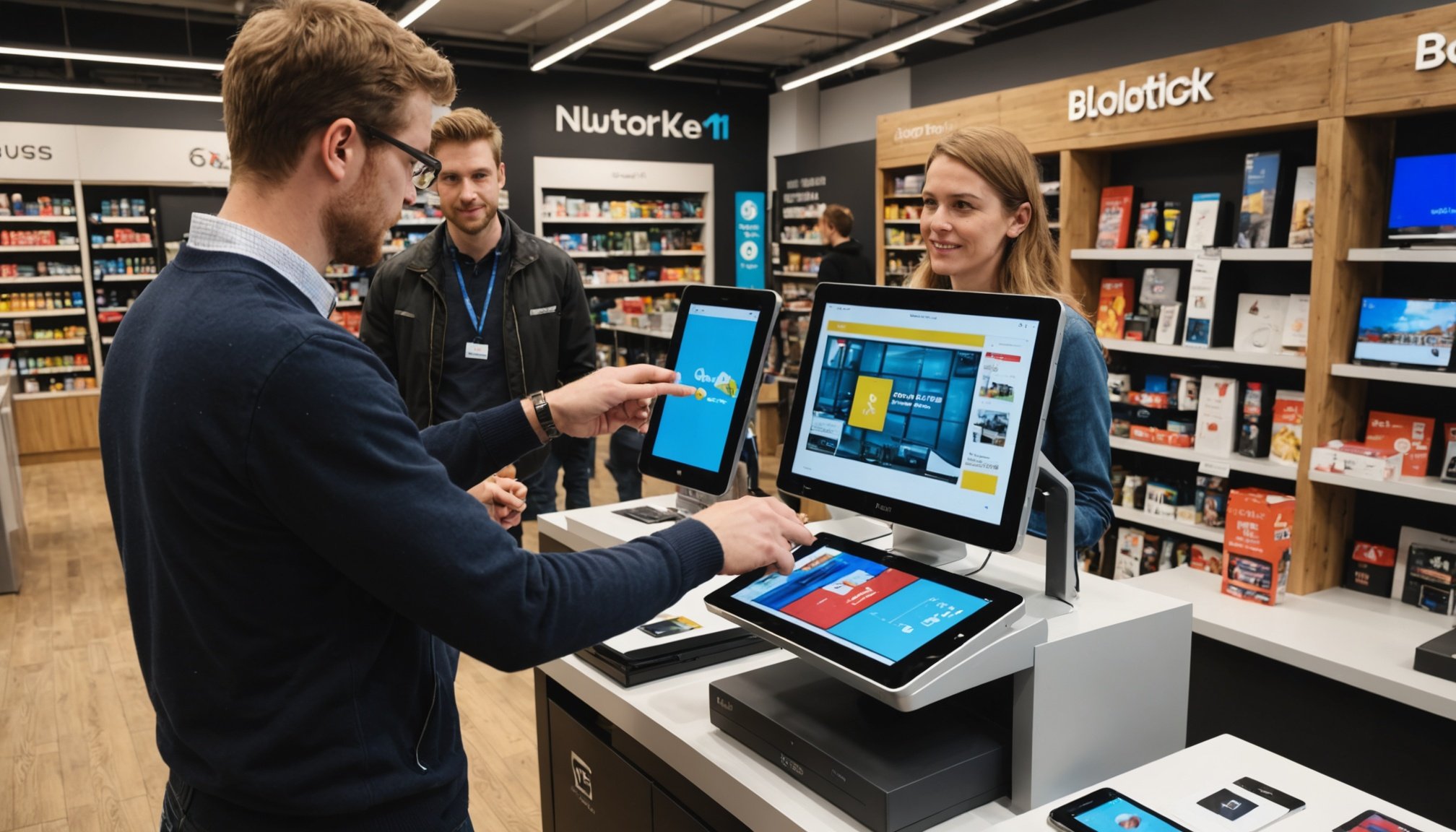Innovative AR Techniques for In-Store Promotions
Augmented reality (AR) is reshaping in-store promotions by revolutionizing the way customers interact with products. Through AR techniques, retailers can create immersive experiences that are both informative and engaging for shoppers. These techniques are crucial in adopting new promotional strategies to attract modern customers who crave technological interaction.
Interactive Displays
Interactive displays utilize AR techniques to engage customers by overlaying digital information onto physical products. This form of customer interaction not only provides additional information but can transform shopping into a playful learning experience. By revealing bonus content such as product specifications, reviews, and videos, interactive displays offer an exciting way to guide consumer choices.
Also read : A comprehensive safety procurement guide for smart suppliers
AR-Enabled Product Information
Promotional strategies benefit from the inclusion of AR-enabled product information. By scanning a product with a smartphone, customers can access detailed content such as virtual user manuals or customization options, elevating the overall shopping experience. This immediate access to data aligns with consumers’ desires for quick and versatile information retrieval.
Virtual Try-Ons
One of the most revolutionary AR techniques, virtual try-ons allow customers to envisage how products will look or fit without any physical interaction. Whether it’s trying on clothing, spectacles, or makeup, this innovative method maximizes convenience and boosts purchase confidence, ultimately enhancing the shopping experience with seamless customer interaction.
Also to discover : Enhancing Museum Engagement: Innovative Podcast Strategies to Captivate UK Visitors
Understanding Augmented Reality in Retail
Augmented reality, a cutting-edge retail technology, merges digital elements with the real world to enhance in-store experiences. By allowing a digital overlay of images, stats, or features to appear on products through devices like smartphones, AR brings an interactive dimension to shopping. This technology is pivotal for customer engagement as it cultivates an immersive environment for shoppers, encouraging exploration and interaction beyond traditional methods.
Current in-store promotions leverage AR to bridge the gap between virtual and physical shopping. Retailers use augmented reality to offer personalized promotions and instant access to product details, thereby catering to the modern consumer’s tech-savvy expectations. Trends show a growing adoption of AR apps enabling virtual store visits and interactive product demonstrations, aligning with consumer desires for an engaging shopping journey.
As AR applications continue to evolve within the retail sector, the emphasis on user-friendly interfaces and seamless integration into existing systems is gaining prominence. This reflects an industry-wide shift towards enhancing consumer experiences, making augmented reality not just an accessory but a fundamental element of retail innovation. With technology advancing, future trends indicate even greater reliance on AR to redefine in-store promotions and customer satisfaction.
Understanding Augmented Reality in Retail
Augmented reality (AR) in retail is transforming how retailers engage customers by merging digital and physical shopping experiences. By overlaying digital content onto the real world, this innovative retail technology enables a dynamic interaction between customers and products. It allows for instant access to information, enhancing the depth and enjoyment of the in-store experience.
AR plays a critical role in boosting customer engagement. By providing interactive elements, it captivates shoppers, encouraging them to explore products more thoroughly than through traditional methods. This increased engagement not only enriches the shopping journey but also facilitates better consumer decision-making.
Recent trends in AR applications within the retail sector highlight a strong focus on personalised experiences and seamless integration. Retailers are increasingly adopting AR technology to offer bespoke promotions and detailed product insights, meeting the demands of modern tech-savvy consumers. From virtual store visits to interactive product demos, these applications are paving the way for a more immersive shopping experience.
As this technology continues to evolve, the emphasis on user-friendly interfaces and integration into existing systems is becoming more pronounced. AR is not merely an addition to retail; it is becoming a cornerstone of modern in-store promotions by continually redefining customer expectations and experiences.
Case Studies of Successful UK Retailers
In the United Kingdom, retailers have been embracing AR applications to enhance the shopping experience and drive sales. By scrutinizing several case studies, it is evident how innovative use of this technology leads to tangible benefits.
Leading the charge, a prominent UK clothing retailer implemented a virtual try-on feature, revolutionising the traditional shopping modality. This AR strategy not only improved customer satisfaction but also significantly boosted online engagement. For instance, the introduction of virtual try-ons led to a 30% increase in purchase conversion rates, illustrating the immediate impact AR can have on sales.
Another notable example involves a tech-oriented UK department store which successfully integrated interactive product displays. By offering customers the ability to view detailed product demonstrations with AR, they observed a 20% rise in in-store footfall.
Lessons from these retailers highlight the importance of aligning AR with consumer desires for immersive and convenient shopping experiences. These successful campaigns underline that when AR applications are seamlessly integrated, they dramatically enhance consumer interaction, making shopping more dynamic and informative.
Ultimately, these successful case studies serve as a blueprint for other retailers aiming to leverage AR to expand their market reach and improve customer satisfaction metrics.
Steps to Implement AR Techniques in Retail
Bringing augmented reality into the retail space involves careful implementation and strategic integration to ensure success. The first step is to clearly identify the goals and objectives of your AR campaign. A precise understanding of what you aim to achieve with AR technology will guide all subsequent decisions. Are you focused on enhancing customer engagement, boosting sales, or improving brand perception? Answering these questions with accuracy sets a solid foundation for your strategy.
Once your goals are established, the next consideration is selecting the right AR technology. With a plethora of options available, it’s crucial to evaluate each against your business needs and resources. From AR apps to immersive displays, each technology provides varying degrees of customer interaction and functionality. Selecting the right fit is essential for seamless technology integration into existing retail systems.
Finally, training staff and educating customers about AR’s functionality is pivotal. Employees should be well-versed with the technology to assist and encourage customers effectively. Equipping customers with user-friendly guides and demonstrations ensures they can navigate AR seamlessly, enhancing their shopping experience. This phase empowers both staff and customers, paving the way for successful AR adoption and its myriad benefits.
Challenges of Implementing AR in Retail Promotions
Implementing augmented reality (AR) in retail presents various challenges that need to be strategically addressed for successful integration. One of the foremost barriers faced by retailers is the cost consideration. AR technology, while innovative, requires significant investment in both hardware and software, potentially burdening budget allocations, especially for small-to-medium enterprises. Cost management is intensified by the need for technological updates and potential customisations to align with specific retail needs.
Furthermore, overcoming consumer skepticism is a crucial hurdle. Despite the unified benefits of AR, some consumers may be hesitant to adapt to new technologies, fearing complexity or privacy issues. Retailers must, therefore, implement effective demonstrations and user-friendly interfaces to assuage these concerns, facilitating smoother acceptance and engagement.
Apart from costs and consumer perceptions, logistical challenges include ensuring seamless technology integration with existing in-store systems. Effective integration demands not just financial resources but also time and effort from both technology providers and retail staff. Moreover, continuous training and support are essential to maintain functionality and address any emerging issues promptly.
Addressing these challenges proactively by planning and investing in user experience and stakeholder education will position retailers to harness the full potential of AR technology in transforming retail promotions.











